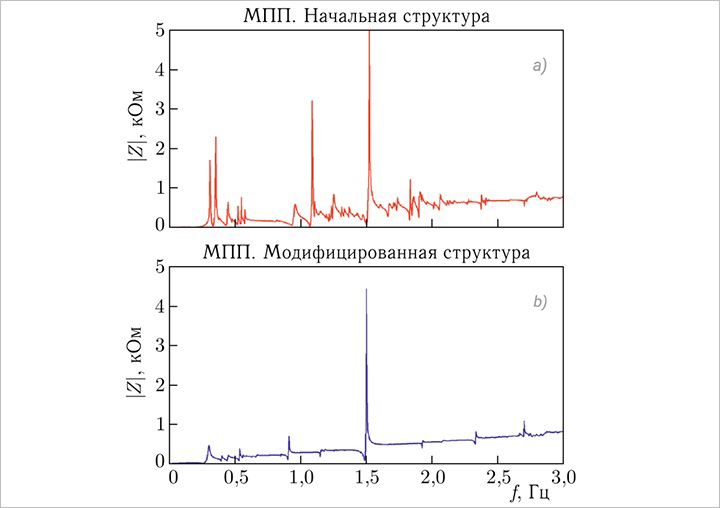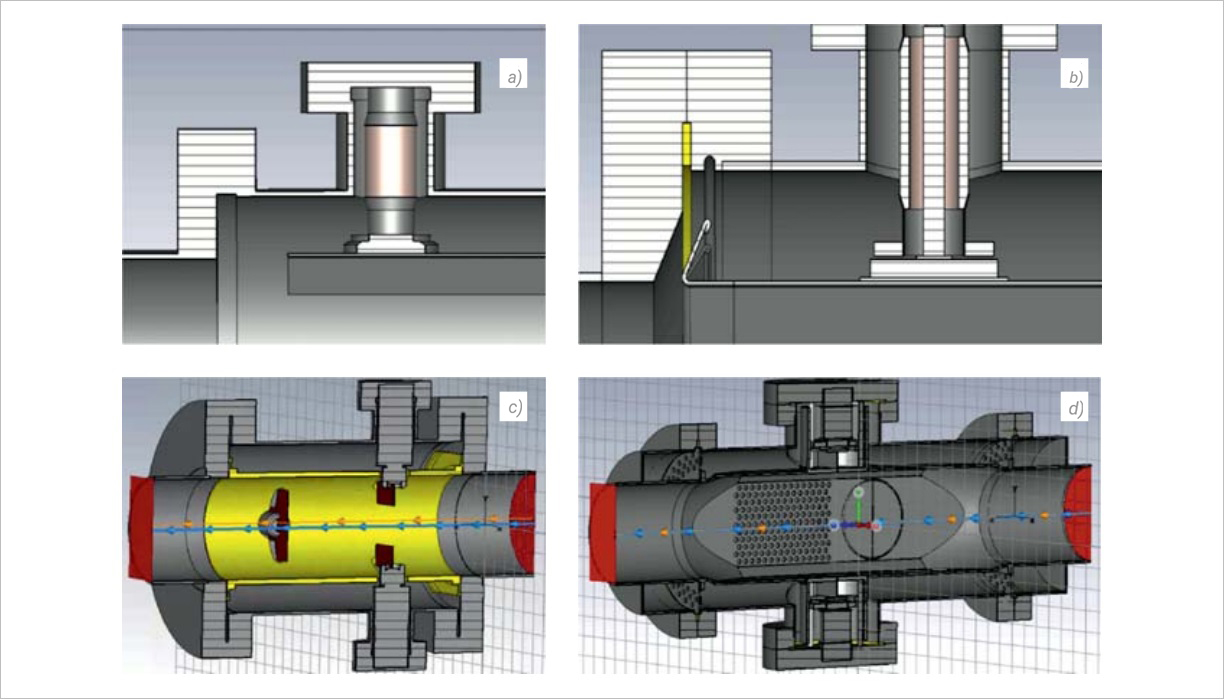In-depth modelling of beam dynamics at NICA Collider before commissioning
News, 15 September 2022
The Laboratory of High Energy Physics JINR performs analytical and numerical calculations of beam dynamics at the NICA accelerator complex. Most of these calculations are devoted to studying the motion of heavy ion beams at the NICA Collider Complex under construction. The analysis of the heavy ion beam dynamics is necessary to determine the required settings and optimal modes of operation of the various systems of all installations and beam transportation channels of the accelerator complex.
Like any modern accelerator facility of this kind, the NICA Collider requires detailed modelling and unique relevant numerical calculations. The complexity of describing the effects occurring when modelling the dynamics of charged particles and characteristically long time ofthese effects’ manifestation lead to the need of using parallel computing. It can be done only with the help of supercomputers, such as the Govorun Supercomputer available at the Laboratory of Information Technologies JINR. The specific nature of the numerical modelling carried out at the NICA Collider requires a significant complication of the calculations carried out, increasing time costs and computing resources.
An indication of the correctness of the numerical methods, algorithms, and approaches used is that they were applied to the analysis of charged particle beam dynamics in the Booster, which was launched in late 2020, and the Booster and Nuclotron, which were successfully configured to work together as part of the NICA Complex injection chain in 2022.
 A team of scientists engaged in beam dynamics calculations at the NICA control room (from left to right): A.V. Filippov, A.V. Tuzikov, S.A. Kostromin, O.S. Kozlov, M.M. Shandov, S.A. Melnikov, V.L. Smirnov
A team of scientists engaged in beam dynamics calculations at the NICA control room (from left to right): A.V. Filippov, A.V. Tuzikov, S.A. Kostromin, O.S. Kozlov, M.M. Shandov, S.A. Melnikov, V.L. Smirnov
A group of scientists from VBLHEP JINR Accelerator Department carries out the calculations. According to a researcher of the VBLHEP Sector of Accelerator Element Field Modelling and Measurement Mikhail Shandov, the success and the fastest obtaining of physical results of the experiment will depend on how well the facility itself, the collider, is constructed, and also how it is configured. “A lot of calculations have been done and a lot of staff members have been doing it. From the tasks of launching, adjusting the facility, and obtaining its project parameters, we have selected the topical onesjustifying their importance. We have described what we have done to accomplish the tasks and what results have been obtained. Thus, we have highlighted the main direction for theoretical research that will have the greatest practical results in the first launches of the collider,” he said.
Preliminary calculations of charged particle beam dynamics in the two rings of the NICA Collider have been completed. The results cover the range of basic phenomena expected in the various operation regimes of the facility. However, the high demands on the performance of the charged particle beam by the developers of the NICA Project required an in-depth analysis of several aspects of beam dynamics using more detailed approaches. Therefore, there now remains a number of challenges requiring long-term numerical modelling that must be resolved before the collider is put into operation.
“These are mainly the tasks involving collective effects (arising from the beam’s own charge and from the interaction of the beam with the surrounding equipment). These effects have been assessed during the designing of the accelerator and the selection of initial settings for the commissioning phase of the Collider. But even after the collider is launched, there will be experimental data that will need to be used to correct the initial settings of the facility to get the required beam parameters, which is largely based on comparing them with the calculated data,” Senior Researcher of the Sector of Accelerator Element Field Modelling and Measurement, Doctor of Physics and Mathematics Victor Smirnov said.
 Frequency dependence of the longitudinal coupling impedance for the basic beam position sensor configuration(a) and the optimised structure (b)
Frequency dependence of the longitudinal coupling impedance for the basic beam position sensor configuration(a) and the optimised structure (b)
When performing calculations of charged particle beam dynamics, scientists try to bring them closer to the real situation, taking into account systematic and random factors as much as possible. Analytical methods of analysis have been used successfully in synchrotrons to obtain fast assessments and are sufficiently accurate for a limited range of applications, but there are still a number of issues that require numerical calculations closely linked to practical verification.
Both specialised software packages and mathematical models and algorithms developed by VBLHEP staff members are used for the calculations.
Numerical programmes for three-dimensional particle tracing, adapted specifically for the NICA Collider, have been used to calculate the motion of heavy ions. They have been used, for example, to study in detail the effect of intrabeam scattering on beam characteristics.
The results obtained in the calculations carried out are in line with earlier estimations for a number of parameters, but they also show some differences. Therefore, a further detailed analysis of the data is required, aimed at identifying real physical patterns in the motion of charged particles and eliminating systematic processing errors in numerical and analytical modelling results.
Preliminary calculations of the accelerator parameters can significantly reduce the commissioning time of the facility, as they help to configure the collider’s equipment more precisely and finely. Another long-term modelling task, which will be implemented after the launch, is the detection of malfunctioning machines. “Subsequently, after comparing the real beam circulation with the models we have built, we will be able to identify from the differences either we really have not taken into account a physical factor or we can understand where exactly something goes wrong and thus correct the errors,” Mikhail Shandov explained.
The motion of charged particles in the collider is more complex than in the complex’s existing ring accelerators, the Booster and Nuclotron. Moreover, the collider has two modes of operation: the charged-particle beam accumulation mode and the main mode called the charged-particle beam collision mode. Each of these modes has its own optimal settings.
In addition, the beams of charged particles in the collider will circulate exponentially longer, lasting several dozen minutes or even hours, whereas there are only seconds in the Nuclotron and the Booster. This leads to an increase in the timing of collective forces and the occurrence of instabilities of various kinds.
“In both, the Booster and the Nuclotron, we launch the beam, accelerate, and extract it. Meanwhile, in the collider, it is accumulated, increasing its total charge and the number of ions. A certain number of beam portions after acceleration in the Nuclotron gradually fill the collider, and the collider is already starting to show effects that we cannot observe in the Booster and the Nuclotron”, Mikhail Shandov commented.
A group of scientists from VBLHEP JINR Accelerator Department propose to optimise the design of particular elements of the collider. The basic configuration of these elements, such as the feedback system kicker and the beam collimation node, is operational. The collider project involves several upgrades, which will be carried out after the first runs of the accelerator complex are completed. “Since the things found now in the modelling are of an optimisation rather than a principle character, we say conditionally that during one of the future detector upgrades we will also be able to replace, for example, some elements of the magneto-optical structure or diagnostic elements. And after that we will be able to improve not only the detector itself but also the quality of the beam,” Mikhail Shandov said.
 Basic (a, c) and proposed longitudinal coupling impedance reduction (b, d) configurations of feedback system kicker (b) and beam collimation node(d)
Basic (a, c) and proposed longitudinal coupling impedance reduction (b, d) configurations of feedback system kicker (b) and beam collimation node(d)
The results of the analysis of the calculations are presented in detail in the article “Actual Problems in Research of Beam Dynamics at the NICA Collider” published by the JINR Publishing Department. The calculations have been performed for the operation of the collider with gold ions; in the future, however, scientists plan to carry out a similar analysis of the motion of other types of particles, such as protons and bismuth ions, for different operation regimes of the complex.